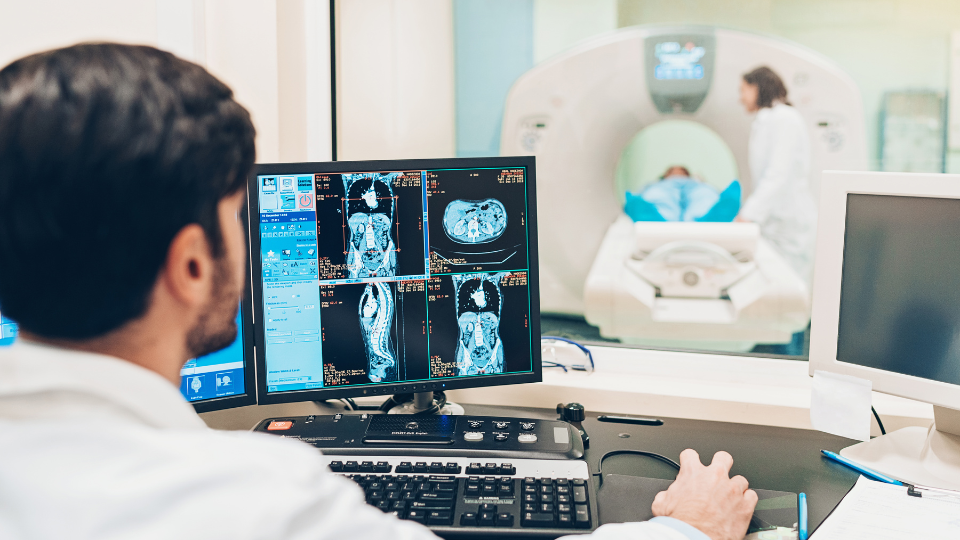- September 18, 2023
- By: Dr. Jamie Ahn
From MRI to Mystery: The Truth About Gadolinium Toxicity
Have you’ve begun experiencing symptoms after an MRI…maybe days or even years later and don’t know what to do about it? Maybe you’re experiencing complex and mysterious symptoms that you (or your doctor) can’t figure out…
If this sounds all too familiar, please know that you aren’t going crazy and that there are answers! Today, let’s chat about something that feels like a puzzle for many: Gadolinium toxicity.
I am here to give you hope and to help you find out what’s going on to give you relief!
As a Naturopathic and Functional Medicine Doctor that specializes in complex medical cases, I’m all about looking at the big picture of your health, getting to the root of symptoms by addressing imbalances, dysfunctions, toxicities and deficiencies.
What is Gadolinium?
Gadolinium: you might have come across this term if you or someone you know has undergone an MRI (Magnetic Resonance Imaging) scan. It’s a rare earth metal, which, when used in its chelated form, serves as a contrast agent, meaning it’s used to make certain parts of our body stand out more clearly on the scan so doctors can get a clearer picture.
The Concern with Gadolinium
After an MRI, our kidneys work to flush out gadolinium…or so it was thought.
However, sometimes, not all the gadolinium gets swept out. A bit of it can stay behind, sticking to our tissues.
Functional medicine recognizes this connection within the body. Every system is intertwined, and a slight imbalance in one area can ripple throughout, creating a range of symptoms.
Previously, it was thought that our body rapidly flushed out Gadolinium, predominantly through the kidneys.
However, recent research suggests that remnants of Gadolinium can linger, notably in regions like the brain and bones. These findings have heightened our awareness and concerns about its prolonged, chronic impact on our well-being.
Why It Varies From Person to Person
Not everyone exposed to gadolinium will experience these symptoms. Our bodies’ reactions to gadolinium can vary based on factors like one’s gut health, genetic predispositions, immune response, age, and detoxification pathways can play a role in how one metabolizes and expels Gadolinium. So while one person may be perfectly fine after an MRI or two, another person may experience symptoms right after or even years after.
Symptoms of Gadolinium Toxicity
It’s essential to differentiate between the acute and chronic symptoms of gadolinium toxicity, as the distinction can guide both diagnosis and therapeutic interventions.
Acute Symptoms of Gadolinium Toxicity
The acute symptoms are those which manifest soon after exposure to gadolinium, typically within days. They might be temporary but can be distressing:
- Allergic-like reactions: Although rare, some people can experience allergic reactions to GBCAs. Symptoms can include hives, itchy eyes, and even more severe reactions like difficulty breathing or anaphylaxis in very rare instances.
- Nausea and Vomiting: Shortly after the administration of the GBCA, some individuals might feel nauseous or even vomit.
- Headache: An immediate headache following the MRI procedure might be a sign of an acute response to the gadolinium.
- Skin Changes: There can be immediate skin changes, such as rashes or redness at the injection site.
Chronic Symptoms of Gadolinium Toxicity
Chronic symptoms are more insidious and may develop over weeks to months or even years after exposure. They are linked to gadolinium retention in the body:
- Bone and Joint Pain: Persistent pain that doesn’t seem related to any injury or other known conditions can be a sign of gadolinium retention. People experience stiff joints and ligaments, which need constant stretching.
- Cognitive Impairments: Commonly referred to as “brain fog,” individuals might experience memory lapses, difficulty concentrating, or even mood disturbances.
- Skin Changes: Over time, the skin might become thickened or appear spongy or rubbery, a condition known as nephrogenic systemic fibrosis (NSF). This is more common in patients with renal impairment, as they cannot efficiently excrete gadolinium.
- Muscle Twitches: Random muscle twitches or even feelings of pins and needles in extremities can become pronounced.
- Vision and Hearing Disturbances: Some patients report blurry vision or tinnitus (ringing in the ears) or experience buzzing/vibrating sensations.
- Chronic Fatigue: Persistent, unexplained fatigue that doesn’t improve with rest can be a lingering symptom.
Acute reactions often manifest as a body’s immediate response to the GBCA and can often be tied directly to the MRI procedure. They tend to resolve as the gadolinium is excreted from the body.
On the other hand, chronic symptoms are often associated with the body’s inability to entirely eliminate gadolinium, leading it to deposit in various tissues.
It’s crucial to approach both acute and chronic symptoms with a comprehensive diagnostic approach, considering individual health histories, and other potential contributory factors.
If you think you have a gadolinium toxicity, please reach out to us so we can guide diagnostic testing and potential therapeutic interventions.
The Functional Medicine Perspective on Symptoms After MRIs
From a functional medicine viewpoint, the accumulation or retention of foreign toxins like Gadolinium can contribute to systemic imbalances. Our body operates on cellular communication, and any interference can disturb this equilibrium, leading to chronic and complex symptoms.
Addressing Gadolinium Toxicity Naturally
- Detoxification Support: Boosting the body’s natural detox pathways can assist in reducing the Gadolinium load. Incorporating liver-supporting foods, hydration, and certain high quality supplements can be beneficial at getting it out of the body. Keep in mind that to do this safely, please work with an trained medical professional in the Functional Medicine/Naturopathic space.
- Gut Health Optimization: A healthy gut can aid in the expulsion of toxins and reduce your overall toxic load on your body. Probiotics, prebiotics, and a fiber-rich diet can fortify gut health as well as addressing any underlying gut infections or bacteria/ fungal overgrowths.
- Nutritional Assessment: Ensuring adequate intake of essential nutrients can support overall resilience and recovery. They can help support your detox pathways and help your body
- Functional Lab Testing: Specific tests can help detect Gadolinium levels and how it may be affecting your health. We test Gadolinium levels along with other heavy metals in our Norwalk office.
Experiencing Symptoms After MRI? Book a Call with Us!
Our bodies are complex, resilient, and interwoven systems. By understanding the broader picture and addressing potential risks holistically, we can help you not only address underlying toxicities, but also help you reach optimal health.
If you or a loved one have undergone MRI procedures and are concerned about Gadolinium toxicity, or if you’re experiencing unexplained health issues, it may be time to dig deeper.
Book a call with us today, and let’s address any underlying toxicities.

